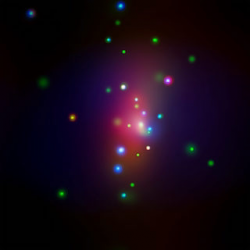
When:
Friday, May 10, 2024
12:30 PM - 1:30 PM CT
Where: 1800 Sherman Avenue, 8th floor, Cafe, Evanston, IL 60201 map it
Audience: Faculty/Staff - Post Docs/Docs - Graduate Students
Contact:
CIERA Astrophysics
(847) 491-8646
CIERA@northwestern.edu
Group: CIERA - Observational Astronomy Meetings
Category: Lectures & Meetings
Description:
Wednesday Observational Meetings for Northwestern University's Center for Interdisciplinary Exploration and Research in Astrophysics (CIERA), this week featuring:
TBA
Speaker 2: Collin Christie (UArizona, virtual) collinchristy@arizona.edu
Title: The Peculiar Radio Evolution of the Tidal Disruption Event ASASSN-19bt
Abstract: Tidal disruption events (TDEs) offer a direct pathway to study the launch of relativistic jets, and other non-relativistic outflows. We can observe these outflows in synchrotron emission as they propagate into the surrounding medium. The nature of these outflows has been shown to be quite diverse, with some TDEs exhibiting luminous and long lasting radio emission while others remain undetected. Furthermore, follow-up observations of TDEs suggest that not all outflows are launched on similar timescales, with some occurring years after the optical flare. In this talk, I will present detailed radio observations of the TDE ASASSN-19bt/AT2019ahk spanning 40 to 1464 days after the onset of the optical flare obtained with the Australia Telescope Compact Array (ATCA), the Atacama Large Millimeter/submillimeter Array (ALMA), and the MeerKAT radio telescopes. We find that ASASSN-19bt displays unusual radio evolution compared to other TDEs, as the peak brightness of its radio emission increases rapidly after ∼1 year post-optical discovery. Using standard equipartition techniques, we estimate the energy and corresponding physical parameters for two possible emission origins: a non-relativistic spherical outflow and a relativistic outflow observed from an off-axis viewing angle. We find that neither model provides a holistic explanation for the origin and evolution of the radio emission, emphasizing the need for more complex models. ASASSN-19bt joins the population of TDEs that display unusual radio emission at late times, making long-term radio observations of these TDEs, especially during the later phases, crucial for understanding how these types of radio emission in TDEs are produced.